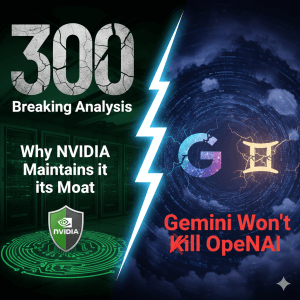
Alright, let’s talk about the wild world of cybersecurity, where it feels like every other week there’s a new a company getting swallowed up by a bigger fish. What we’re really seeing, though, is less about “new platforms” and more about good old-fashioned consolidation. Vendors are gobbling each other up to offer a more “complete” picture. And let me tell you, Palo Alto Networks (NASDAQ: PANW) move to snag CyberArk (NASDAQ: CYBR) is a prime example of this trend, screaming “platformization” from the rooftops. They used the word “platform(s)” 14 times in their joint press release. This deal is a massive one, valued at $25 billion, with CyberArk shareholders receiving $45 in cash and 2.2 shares of Palo Alto Networks common stock for each of their CyberArk shares.
Palo Alto has a $115B market cap with revenue under $10B, so Nikesh Arora is likely acutely aware of the need for TAM expansion, which acquiring CyberArk accomplishes.
Identity: The New Perimeter
At the heart of all this churning, one thing is becoming crystal clear: identity is the new cybersecurity frontier. Forget those old-school firewalls trying to keep the bad guys out. In today’s hyper-connected world, the real action is happening around who, or what, gets access to your stuff. We’re talking about both human users and an explosion of non-human entities, those digital workers and AI-driven processes that are popping up faster than we can even figure out what they are, let alone secure them.
Most organizations are flailing when it comes to a solid non-human identity strategy and let’s be honest, a lot of our current identity strategies still rely on us trusting companies with our personal data, which, in an age of constant breaches, feels a bit like asking for trouble.
This explosion in non-human identities, though, means that this vertical is also arguably one of most likely within cybersecurity to scale disproportionately to the rest in the age of agentic AI, making it a somewhat safe adoption curve bet. Going back to earlier comments on TAM and revenue, this NHI space likely represents tens of billions of dollars in revenue to Palo Alto.
The Zero Trust Imperative
Then there’s the whole “Zero Trust” thing. It’s gone from a cool concept to a federal mandate for many, and everyone’s chasing it. But here’s the kicker: very few are actually doing it well. Why? Because it’s not a magical fix you can install and forget. It’s not software, hardware, people, or processes. It’s all of that.
Zero Trust is a never-ending journey, a constant evolution of how you verify every single user and device, no matter where they are. It’s about assuming the bad guys are already inside your network – because, let’s face it, they probably are. This mindset shifts the focus from preventing initial breaches to containing the damage once an intruder is in, severely limiting their ability to move around and wreak havoc.
AI’s Impact on the Threat Landscape
And speaking of bad guys, have you noticed how fast AI is changing the game? Palo Alto’s own Nir Zuk has been pretty vocal about this, highlighting how AI is supercharging the speed and scale of cyberattacks on theCUBE at RSAC in May. Even if the attacks aren’t inherently “smarter” (though often they are), the sheer volume means more successful breaches. It’s like a firehose of cyber-nastiness. Plus, adversaries aren’t just script kiddies anymore; they’re getting their hands on nation-state level tools and exploits, making their attacks far more potent. This isn’t just an evolution, it’s a revolution that demands a total re-think of cybersecurity. The old walls are crumbling, and the new battleground is identity.
Potential Impact on Customers
Now, what does all this consolidation mean for you, the customer? Big acquisitions like Palo Alto Networks buying CyberArk can be a mixed bag.
- Levels of Service: When companies merge, especially large ones, there’s always a concern about how service levels will be affected. Will support response times slow down? Will the dedicated attention you once received from CyberArk be diluted within Palo Alto Networks’ broader portfolio? These are valid questions that customers will be asking and monitoring closely.
- Product Integrations: The “platformization” narrative often promises seamless integration, but the reality can be far more complex. While the vision is a unified security ecosystem, achieving truly deep and stable integrations between two previously separate product suites can take time and often comes with its own set of technical challenges. Customers will want to see concrete roadmaps and tangible results of these integrations, especially in an area as sensitive and foundational as identity security.
- Support for Legacy Products: Identity management is deeply embedded in an organization’s infrastructure. Many companies rely on legacy CyberArk products that are critical to their operations. A major concern will be whether Palo Alto Networks will continue to fully support and invest in these older solutions, or if customers will be pressured to migrate to newer, integrated offerings. This can be a costly and complex undertaking, especially when dealing with critical identity infrastructure.
Is this a good deal?
David Vellante points out that with CyberArk already a healthy and mature company with its own established revenue, this deal is accretive to revenue growth and gross margins, though not to free cash flow until FY28. Palo Alto adds an estimated 10 – 15% of the $200B TAM it’s targeting in the platform wars with this deal and has historically been smart about acquisitions and was able to fund this one with appreciated stock at a time when the market is setting all-time highs. All things considered, this is a good buy for Palo Alto.
tl;dr
The acquisition of CyberArk by Palo Alto Networks is another signal that the big players in cybersecurity are consolidating to offer more comprehensive, integrated platforms. The real crux of the issue, though, usually boils down to whether this “platform” is actually a platform or just another abstraction layer on top of a bunch of M&A.
As AI continues to stir the pot and change how threats emerge, effectively managing and securing all identities, human and machine, won’t just be important, it’ll be the absolute cornerstone of staying safe in this increasingly digital world. This directly impacts organizational resilience and the ability to withstand sophisticated cyber events, linking back to overall strategic implications and financial outcomes.
I’ll look forward to hearing what Palo Alto and CyberArk customer think at Black Hat USA 2025 next week. I’ll be brining you news, interviews, and insights from the ground in Vegas, so make sure you tune in!



